|
Pakistan’s culture and society have been
significantly influenced by diverse ethnic groups living in the country.
Punjabis, Kashmiris, Sindhis, Balochis, Siraikis, Pakhtuns and Muhajirs
have all contributed to our cultural heritage and art over many decades.
The art in Pakistan has also been greatly influenced by various regions
in the neighbourhood. Notable influences include the Persian Empire
along with the Afghan and Mughal Empire. The colonial regime, more
popularly known as British Raj also influenced the forms of fine arts in
the country.However, over the decades and various influences, one thing
which still remains consistent in Pakistani art is vibrant colours.
Bright colours have always been the major attraction and hence, it is no
surprise that local crafts and clothing all consist of a wide spectrum
of colours.Over the years, ethnic art and crafts have gained popularity
on such a large scale that these symbols of trucks have now moved onto
objects and clothes. The cultural art with time has not lost its true
essence. However, it has matured and popularized worldwide, making it a
good business strategy for a lot of common people.Having been spread at
such a vast perimeter, the skills of our local people are being put to
use in mass production bringing a boost in employment and appreciation.
This gallery comprises hand painted items by artist Bina Ali and Anjum
Rana.
|
|
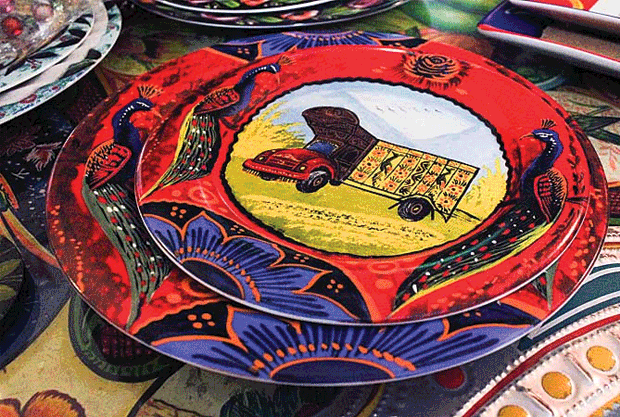 |
|
The art of decorating means of transport gained popularity in the Indian
subcontinent during the period of dominion.
|
|
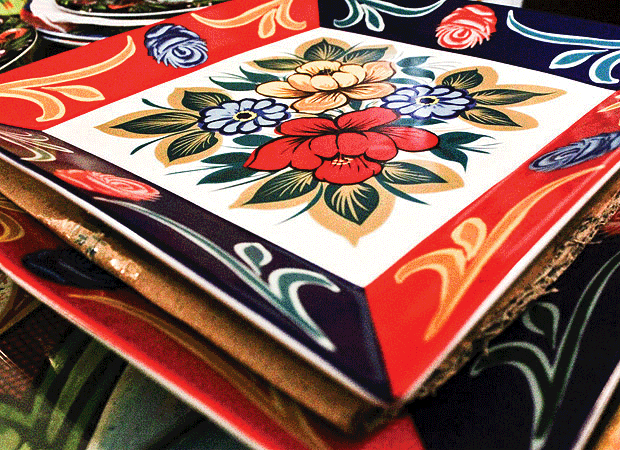 |
Truck owners and aspiring transportation companies hired craftsmen to
embellish their trucks and buses in hopes that these moving pieces of
art would be able to attract attention of the prospective passengers.
|
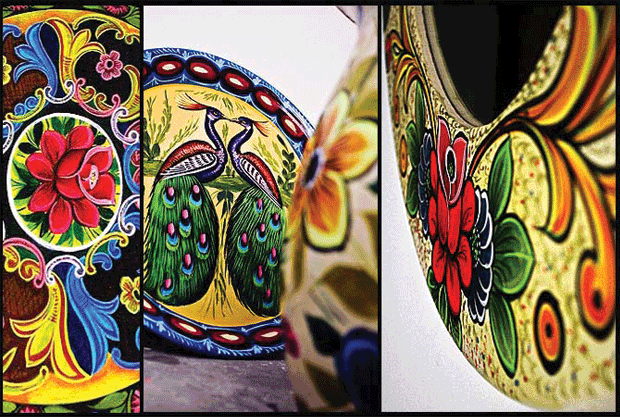 |
With vibrant floral patterns and swirl motifs intricately laid, the
illustration of human heroes with creative features, script of poetic
verses and driver’s words of wisdom have truly made a place in Pakistani
native culture.
|
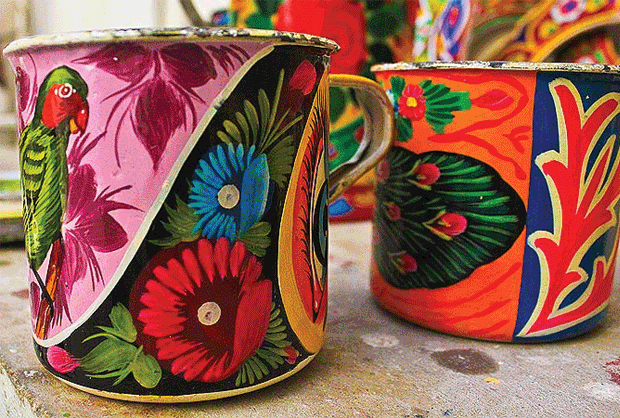 |
This form of ethnic art is prevalent as ever and has in fact developed a
deeper cultural significance over time.
|
 |
It is said that every city’s artists have perfected their art in their
own signature way. For example, artists in the areas of Peshawar favour
wood adornment where as those in Rawalpindi deal in plastic decorations.
Karachi on the other hand is inclined towards the usage of reflective
tapes called ‘chamak patti’ as it is called in the local language.
|
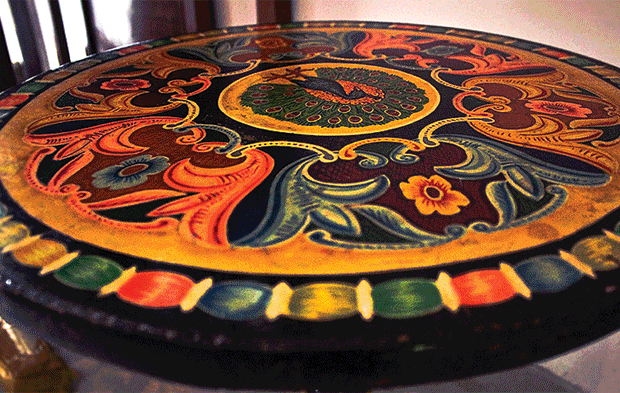 |
In Karachi alone, approximately 50,000 people hustle in diminutive,
family-run workshops comprising highly trained artists, each within
their own well-defined skill. Every hand-painted truck, bus and
rickshaw, despite sharing various symbols visibly displays its
uniqueness.
|
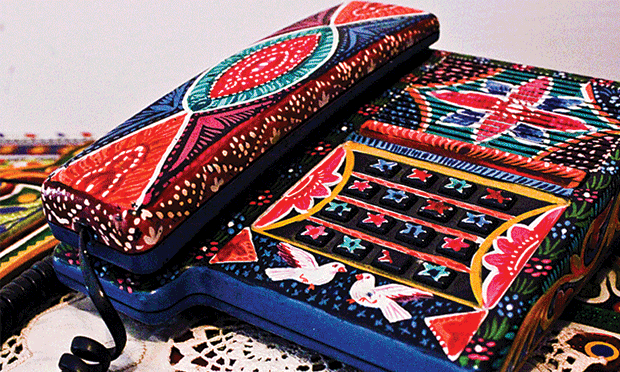 |
Over the years, ethnic art and crafts have gained popularity on such a
large scale that these symbols of trucks have now moved onto objects and
clothes.
|
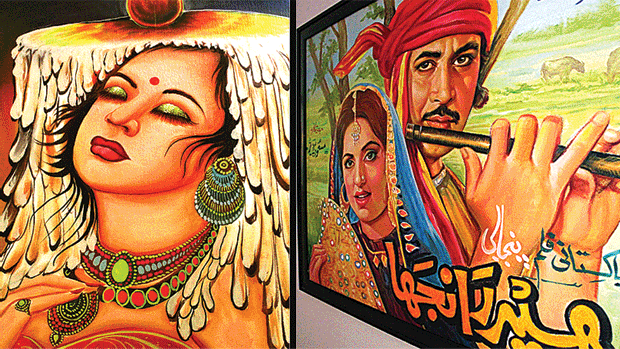 |
|
Just like the truck art in Pakistan, there is another indigenous form of
art which is ‘Billboard painting.’ Presently this is commonly seen on
wooden planks used as wall hangings and even casual t-shirts in the
market.
|
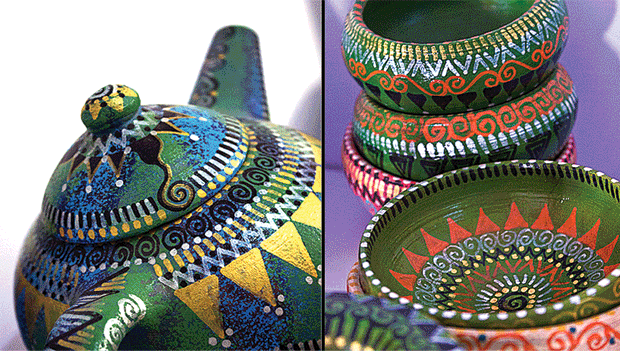 |
Hand painted objects by Bina Ali.
|
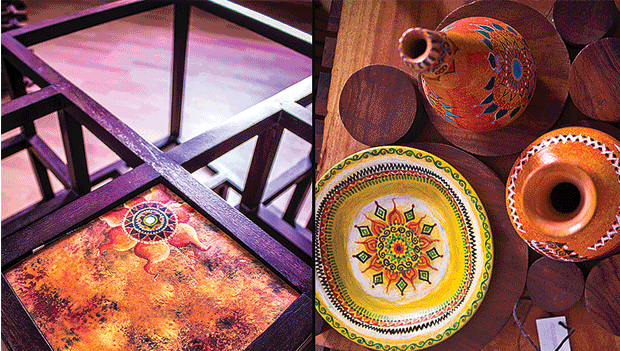 |
|
Bina Ali is a fine art graduate from National College of Arts. |
|
|
|
|